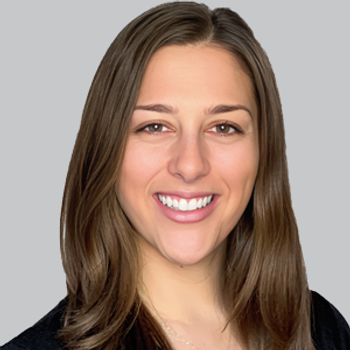
Gaboxadol Shows Clinical Benefit in Angelman Syndrome in Phase 2 Study
The phase 2 STARS trial was the first time in 50 years that an overall improvement in patients with Angelman syndrome was observed, in this instance with a once-daily dose of gaboxadol, also known as OV101.
Alexander Kolevzon, MD
For the first time in almost 50 years, overall clinical benefit has been demonstrated in patients with Angelman syndrome, a rare neurodevelopmental condition with no approved therapies, who were treated with gaboxadol, also known as OV101.1
In the phase 2, randomized, double-blind, placebo-controlled STARS trial of Ovid Therapeutics’ highly selective extrasynaptic GABAA receptor agonist, global improvement was observed at week 12 with a once-daily, 15-mg dose compared to placebo, as measured by the Clinical Global Impressions-Improvement (CGI-I) scale (P = .0006).
The data were presented at the
The trial randomized 78 patients to 1 of 3 treatment arms: 15-mg gaboxadol once daily (n = 29), twice daily 10-mg then 15-mg gaboxadol (n = 29), and placebo (n = 29). The therapy was administered as an adjunctive to commonly used concomitant medications in Angelman syndrome, such as benzodiazepines for non-sleep problems, antiepileptics, melatonin, antidepressants, and gastrointestinal therapies.
“Ovid’s research efforts are focused on finding treatments for rare diseases, which are defined in the US as conditions affecting fewer than 200,000 people, and specifically, we seek to improve the lives of the approximately 8 million people in the US alone living with neurologic manifestations of rare diseases,” Amit Rakhit, MD, MBA, chief medical officer, and head, Research & Development, Ovid, said in a statement.2 “The data we are presenting at AAN reflect the dedication of our R&D teams to investigate the use of OV101 as a potential treatment for Angelman syndrome and Fragile X syndrome, with each condition having a high unmet medical need and no approved therapies.”
At 12 weeks, 67% of patients on the once-daily, 15-mg dose were rated as improved on CGI-I, compared to 43% of those in the twice daily group and 22% in the placebo group. As for the change in specific domains of the CGI-I, there was a —0.77 difference between gaboxadol once-daily and placebo on the sleep domain of Clinical Impression of 9 Domains (P = .0141). The twice-daily group did not separate from placebo (difference, —0.45; P = .1407).
With regard to the Bayley Scale of Infant and Toddler Development, Third Edition (BSID-III) Gross Motor Response subdomain, an improvement of ≥3 points was seen with 36% (n = 9) of patients in the once-daily group compared with 11.5% (n = 3) of those in the placebo group (P = .0522). Additionally, the Parent Global Impression (PGI) was suggestive of clinically meaningful improvement on the CGI-I, particularly in communication, challenging behavior, and anxiety.
“This study wasn’t powered to look at efficacy, so I wouldn’t say it was surprising, but it was really exciting to see some global change,” study author Alexander Kolevzon, MD, Director, Child and Adolescent Psychiatry, Mount Sinai Health System told NeurologyLive®. “The other thing we dug a little bit deeper into was what was informing that global change because Angelman is complicated. It’s a very heterogeneous condition. These kids are affected by a lot of different issues—they’ve got seizures, they’ve got intellectual disability, they’ve got anxiety, they have lots of motor problems.”
In a press conference at the 2019 American Academy of Neurology (AAN) Annual Meeting in Philadelphia, Pennsylvania, where the data was presented, Kolevzon noted that there is some justified criticism of the CGI-I as a measurement tool. He acknowledged that it is a subjective, clinician tool, though he said it does provide some advantages in a condition such as Angelman syndrome. Most notably, it allows the clinician to collate information from a variety of sources, including observations from patients’ parents and the clinicians themselves.
“It’s not a perfect measure. I think the goal is to make it a more perfect measure in terms of really operationalizing which domains we’re trying to tackle in the CGI-I,” he explained. “Certainly, it is a tool that has some precedent in approved trials—it’s typically considered a co-primary measure alongside another. The problem in Angelman syndrome is it’s just so rare and so heterogeneous that we don’t have an established, validated tool, so we’re going with where the science is in terms of what these data showed in phase 2, we’re just doing our very best to create the best tool we can.”
As for safety, adverse events (AEs) occurred at similar rates between the gaboxadol once daily, twice daily, and placebo groups, with 93%, 86%, and 86% of patients in each respective group experiencing ≥1 AE. In total, 4 patients discontinued due to AEs: 1 in the placebo group, and 3 in the twice-daily group. A serious AE was reported in 2 patients, 1 in each treatment group. The once-daily serious AE was an event of seizure, deemed unrelated to the medicine, while the twice-daily serious AE was 2 events of seizure, deemed possibly related to the study drug.
“[The results] provide us with some real hope and optimism about the path forward into the phase 3 trial,” Kolevzon said. “It also gave us important information about the differences in the dosing because what we saw was the difference between the once per day and the placebo group, but not between the twice per day dose and the placebo group.”
For more coverage of AAN 2019,
REFERENCES
1. Bird LM, Ochoa-Lubinoff C, Tan WH, et al. STARS: Results from a Safety and Efficacy Study of OV101 (Gaboxadol) in Adults and Adolescents with Angelman Syndrome. Presented at: 2019 American Academy of Neurology Annual Meeting. May 4-10, 2019; Philadelphia, PA.
2. Ovid Therapeutics to Present at the American Academy of Neurology 71st Annual Meeting [press release]. New York, NY: Ovid Therapeutics; Published April 18, 2019. investors.ovidrx.com/news-releases/news-release-details/ovid-therapeutics-present-american-academy-neurology-71st-annual. Accessed May 6, 2019.
Newsletter
Keep your finger on the pulse of neurology—subscribe to NeurologyLive for expert interviews, new data, and breakthrough treatment updates.




































